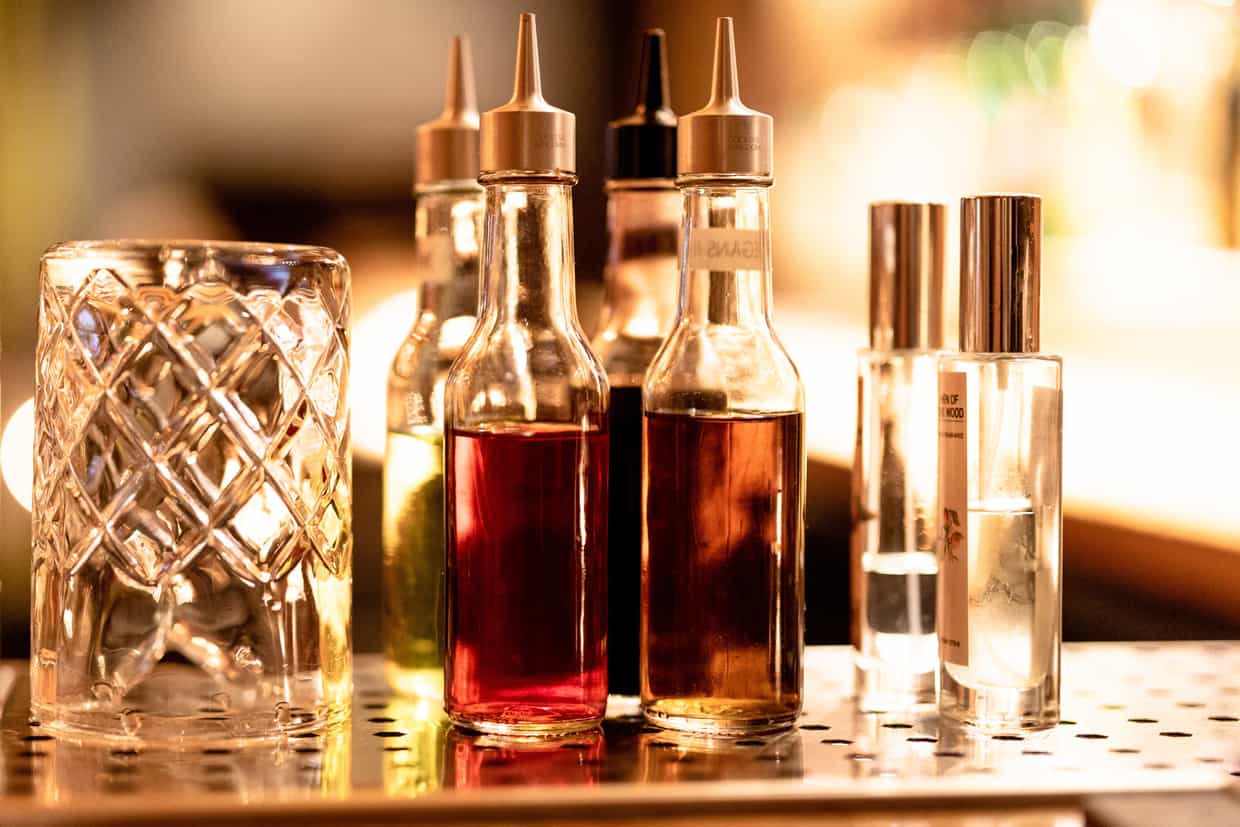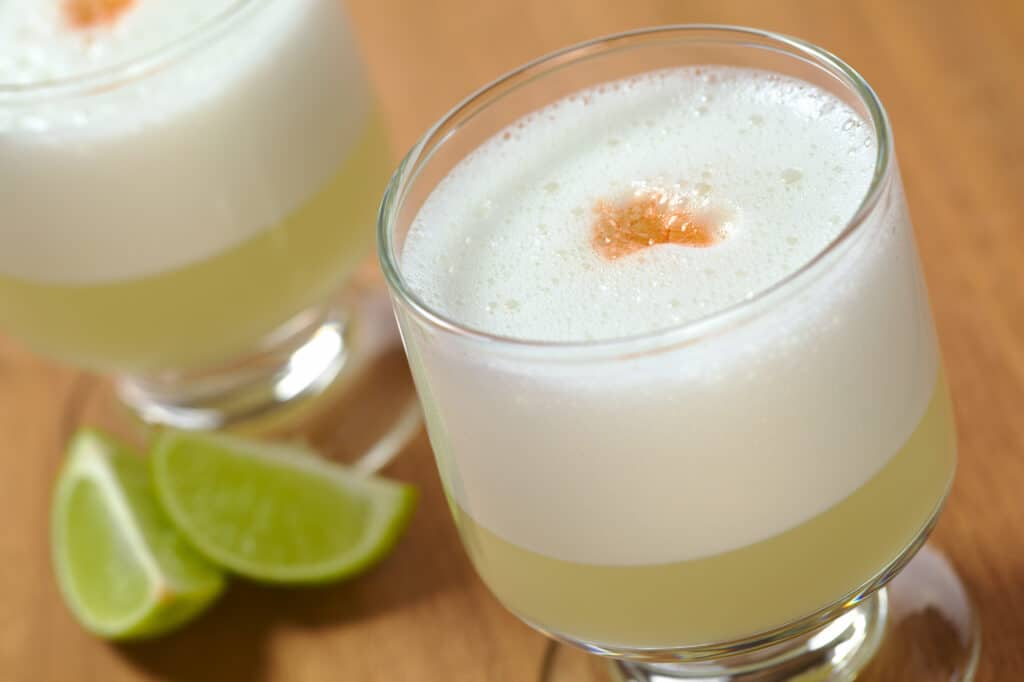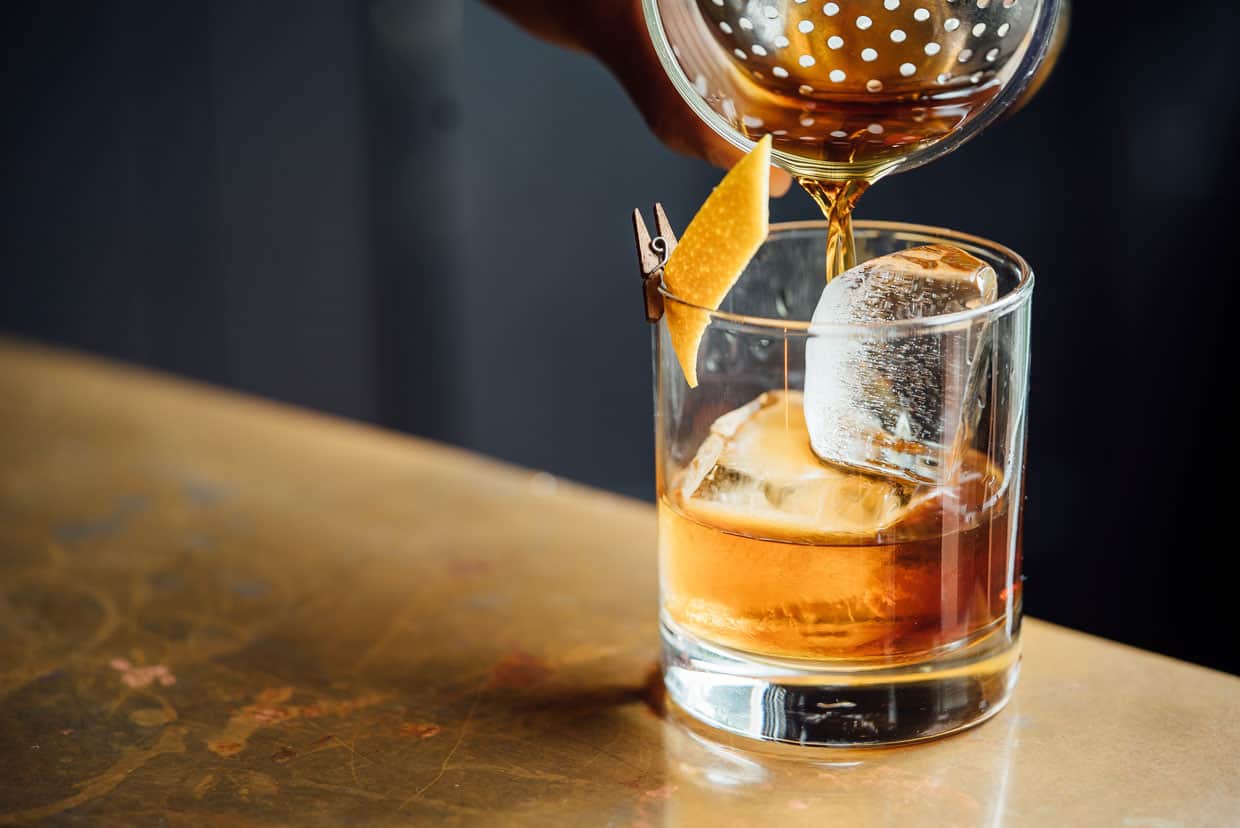What are bitters in cocktails? In short, they are one of the easiest ways to add complexity and flavor to a drink. Learn more about this powerful, versatile ingredient and how to use it.

This post may contain affiliate link(s). As an Amazon Associate, I earn from qualifying purchases. See Disclosures.
Some cocktail recipes call for a few drops of bitters, called a dash. But what does that mean? And what are bitters, exactly?
Bitters provide a finishing touch, adding complexity of flavor to many types of cocktails.
In a sense, bitters are to cocktails as a sprinkle of flaky sea salt or seasoning is to food. A dash or two of bitters can help to balance and improve a drink.
What are bitters?
Bitters are an alcoholic flavoring agent made of aromatic plant extracts that are often used to flavor cocktails and drinks. They are made from a number of botanical ingredients such as herbs, spices, flowers, fruits, seeds, leaves, bark and roots.
A blend of any of these are steeped in alcohol for days, weeks or months to achieve complex flavor combinations. Sometimes they contain artificial coloring too.
The base alcohol can make a difference in the taste. Vodka provides a clean slate for any flavors, but gin and bourbon can add another layer of complexity.

Cocktails using bitters
Bitters are commonly used in spirit-forward cocktails like the old-fashioned, Manhattan and sazerac. They also show up in the classic champagne cocktail.
But bitters don’t stop there: Feel free to add a dash to a margarita or a glass of wine.
Bitters can also be used in low-alcohol drinks, too. Try adding them to coffee, tea or seltzer. The latter is referred to as bitters and soda.
Are bitters alcoholic?
Like vanilla extract, bitters contain alcohol, but both are very potent — you wouldn’t want to drink either one plain.
However, sometimes bitters are used as a spirit alongside other ingredients, such as in the Trinidad Sour cocktail, which calls for one and a half ounces of Angostura bitters to pack a powerful punch.
Newer to the market, non-alcoholic bitters do exist. California-based All the Bitter produces an array of zero-proof bitters made with vegetable glycerin and apple cider vinegar instead of alcohol.

History of bitters
Bitters date back to ancient Egypt, when wine was often infused with herbs. Distilled alcohol was also popular in the Middle Ages.
Similar tinctures boomed in the mid-1800s, when they were used for medicinal purposes to treat everything from stomachaches to malaria.
The earliest known cocktail recipe using bitters dates back to 1806. According to Smithsonian Magazine, an agriculture periodical from Philadelphia called Farmer’s Cabinet, wrote a recipe for what would be considered a cocktail today, calling for four ingredients: “a stimulating liquor, composed of spirits of any kind, sugar, water and bitters.”
Angostura bitters
Angostura is a well-known brand of aromatic bitters, the most common type, which generally contains gentian, quassia and wild cherry bark.
Known for its oversized label — a printing mistake turned branding strategy — Angostura bitters dates back to 1824 when founder Dr. Johann Siegert created a medicinal tincture designed to alleviate stomach ailments.
Seigert’s three sons migrated to Trinidad in the 1870s and his son Don Carlos Siegert established the bitters as an essential ingredient for cocktails and food. Today, bottles of these bitters have a seat at every bar.
However, there are lots of other brands of bitters and flavors on the market. Peychaud’s is another common brand of aromatic bitters that has a woodsy flavor profile of licorice, saffron, orange peel and caramel.

How to use bitters
Cocktail recipes call for dashes, not drops, of bitters. A dash of bitters is typically six to eight drops or about an eighth of a teaspoon.
Some bottles come with a plastic dasher, a plastic stopper with a small hole, while others come with an eyedropper or a spray nozzle.
Plastic dasher: This is the most common way to distribute bitters and many bitters bottles come in this style. When tipped upside down, only a few drops are released at a time. This is considered a dash of bitters.
Eyedropper: A dropper lets you control how many drops of bitters you want to use. You can simply add a single drop or fill the entire dropper to add a dash.
Spray nozzle: The least common method allows you to spray the bitters as a light mist as opposed to heavier, concentrated drops. Intended as a fragrance to enhance the drinking experience through the nose, bitters sprays are more common at upscale cocktail bars with creative menus, though you can certainly play with this method at home.
Flavors of bitters
Though aromatic bitters are a staple of many cocktail recipes, there are many other flavors of bitters to choose from that can transform your drinks.
When deciding which bitters to use, choose flavors that complement your cocktail. Fruit flavors, like orange bitters and cherry bitters, are a great place to start, and then you can layer on spices and herbs.
Seasonal flavors are another good starting point: Warm spices like cinnamon and clove are great for winter cocktails, while bright citrus bitters work their magic in summery drinks.
Use your nose before adding them to a cocktail. Bitters are usually added last, so a quick whiff of your drink will help you decide what would go well together.
These common, beginner flavors will go with many recipes:
- aromatic
- orange
- lemon
- cherry
- ginger
- cinnamon/cassia
- chocolate
Flavors of bitters can get pretty inventive. Sometimes a bottle has a single flavor, other times a combination of several. If you’re ready to upgrade your bitters collection, try one of these:
- peach
- grapefruit
- coffee
- fig
- cardamom
- jalapeño or habanero
- sassafras
- pecan
- lemon pepper
- tiki
- mole

Where to buy cocktail bitters
Collecting bitters for your home bar is a great way to improve homemade cocktails.
You can usually find the key players — orange bitters, Angostura and Peychaud’s — at the grocery store and some liquor stores, usually near the cocktail mixers.
Wine shops and specialty food stores may carry a wider variety of flavors from small-batch bitters brands, such as Hella Bitters, The Bitter Housewife and Bittermen’s.
Tips for using bitters
When using bitters in cocktails, consider these tips:
- Bitters are usually added last. Smell the drink, then decide which type of bitters to add.
- Start with a few drops, then smell or taste the cocktail. Add more as needed.
- Store bitters in a cool, dry place away from sunlight. They last, on average, about five years.
- Have fun with bitters and build a collection of flavors you love and that inspire you.
Based in Charlotte, N.C., Susannah Brinkley Henry is the cocktail content creator behind the blog Feast + West. Her work has been featured in Southern Living, Oprah Daily, Buzzfeed, and more. In 2019, her website was a finalist in the Saveur Blog Awards for Best Entertaining Blog. As a professional graphic designer, photographer, writer, and recipe developer, Susannah helps home bartenders and drink enthusiasts level up their cocktail skills.
This article originally appeared on Feast + West.